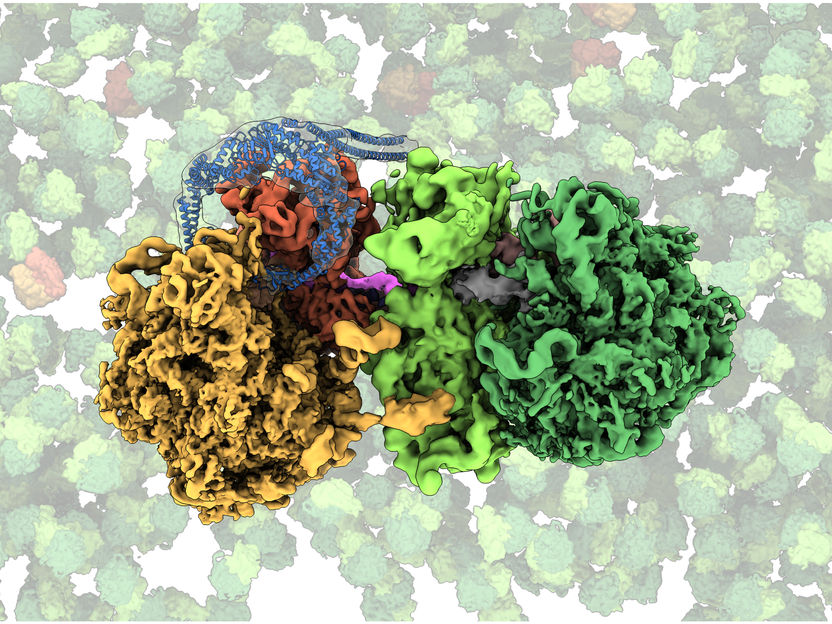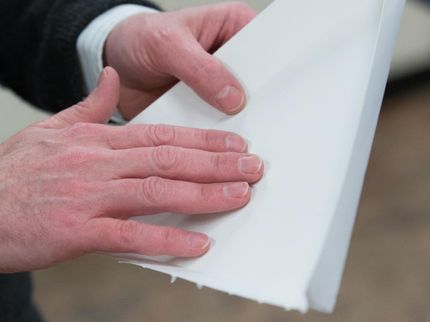Large-scale and sustainable 3D printing with the most ubiquitous natural material
Cellulose is one of the most abundant and broadly distributed organic compound and industrial by-product on Earth. Yet, despite decades of extensive research, the bottom-up use of cellulose to fabricate 3D objects is still plagued with problems that restrict its practical applications: derivatives with vast polluting effects, used in combination with plastics, lack of scalability and high production cost.
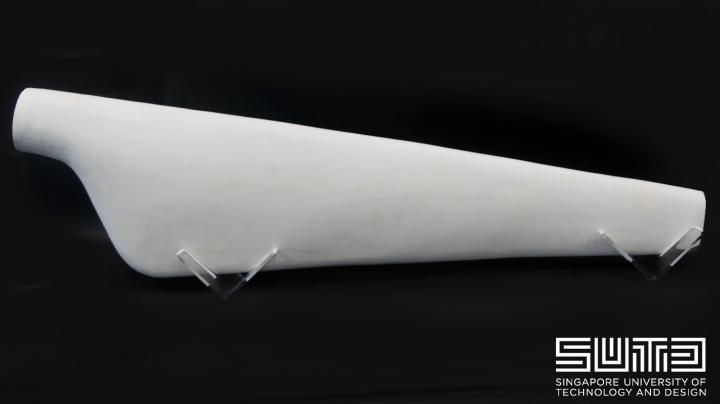
1.2m, 5.2kg turbine blade fabricated entirely with cellulose and chitosan, the most ubiquitous biopolymers on earth and produced in large amounts in almost every ecosystem. Both ingredients are obtained from by-products of the industry, resulting in production with negative ecological footprint.
SUTD
However, researchers from the Singapore University of Technology and Design (SUTD) have recently demonstrated the use of cellulose to sustainably manufacture/fabricate large 3D objects. Their approach diverges from the common association of cellulose with green plants and is inspired by the wall of the fungus-like oomycetes, which is reproduced introducing small amounts of chitin between cellulose fibers. The resulting fungal-like adhesive material(s) (FLAM) are strong, lightweight and inexpensive, and can be molded or processed using woodworking techniques.
This material is completely ecologically sustainable as no organic solvents or synthetic plastics were used to manufacture it. It is scalable and can be reproduced anywhere without specialised facilities. FLAM is also fully biodegradable in natural conditions and outside composting facilities. The cost of FLAM is in the range of commodity plastics and 10 times lower than the cost of common filaments for 3D printing, such as PLA (polylactic acid) and ABS (Acrylonitrile Butadiene Styrene), making it not only more sustainable but also a more cost-effective substitute. The researchers have furthermore developed an additive manufacturing technique specific for the material.
Co-lead of this research, SUTD Assistant Prof Javier Gomez Fernandez, also known for the development of Shrilk said: "We believe this first large-scale additive manufacturing process with the most ubiquitous biological polymers on earth will be the catalyst for the transition to environmentally benign and circular manufacturing models, where materials are produced, used, and degraded in closed regional systems. This reproduction and manufacturing with the material composition found in the oomycete wall, namely unmodified cellulose, small amounts of chitosan --the second most abundant organic molecule on earth -- and low concentrated acetic acid, is probably one of the most successful technological achievements in the field of bioinspired materials."
Co-lead SUTD Assistant Prof Stylianos Dritsas, added: "We believe the results reported here represent a turning point for global manufacturing with broader impact on multiple areas ranging from material science, environmental engineering, automation and the economy. So far we have been focusing on fundamental technology development, and little time has been invested in specific target applications. We are now at the stage of seeking industrial collaborators to bring this technology from the laboratory to the world."
With the increase in waste and pollution, the urgency for more sustainable manufacturing processes is growing. The establishment of a technology based on unmodified compostable polymers of great abundance that does not require cropland or forest resources, will foster the transition to environmentally benign manufacturing and a sustainable society.
Original publication
Naresh D. Sanandiya, Yadunund Vijay, Marina Dimopoulou, Stylianos Dritsas & Javier G. Fernandez; "Large-scale additive manufacturing with bioinspired cellulosic materials"; Scientific Reports; 2018
Most read news
Original publication
Naresh D. Sanandiya, Yadunund Vijay, Marina Dimopoulou, Stylianos Dritsas & Javier G. Fernandez; "Large-scale additive manufacturing with bioinspired cellulosic materials"; Scientific Reports; 2018
Topics
Organizations
Other news from the department science

Get the life science industry in your inbox
By submitting this form you agree that LUMITOS AG will send you the newsletter(s) selected above by email. Your data will not be passed on to third parties. Your data will be stored and processed in accordance with our data protection regulations. LUMITOS may contact you by email for the purpose of advertising or market and opinion surveys. You can revoke your consent at any time without giving reasons to LUMITOS AG, Ernst-Augustin-Str. 2, 12489 Berlin, Germany or by e-mail at revoke@lumitos.com with effect for the future. In addition, each email contains a link to unsubscribe from the corresponding newsletter.
Most read news
More news from our other portals
Last viewed contents
Category:Anesthesiologists
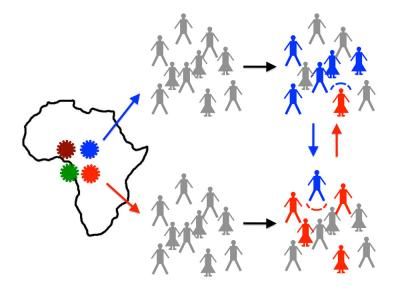
Why do new strains of HIV spread slowly?
Category:GS_domain

Exploring the current paradigm of gene regulation - How much tissue-specific information is contained in enhancer sequences?
John_Henryism
Portosystemic_shunt
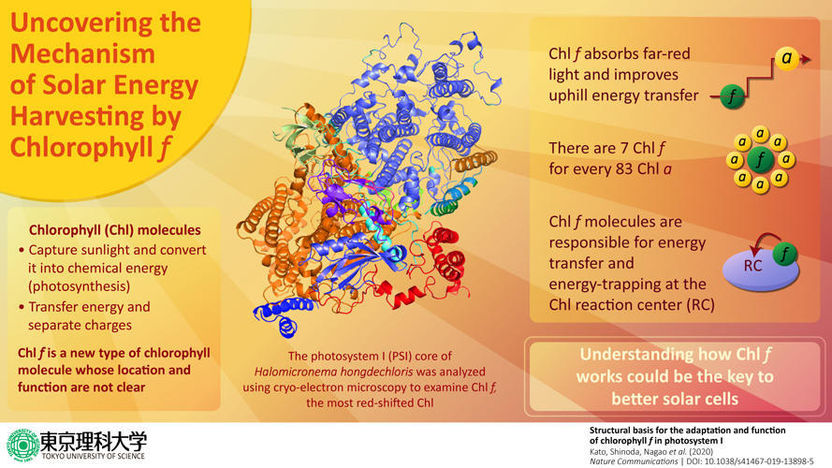
New study on a recently discovered chlorophyll molecule could be key to better solar cells - Scientists uncover location and functions of a new type of chlorophyll molecule for the first time
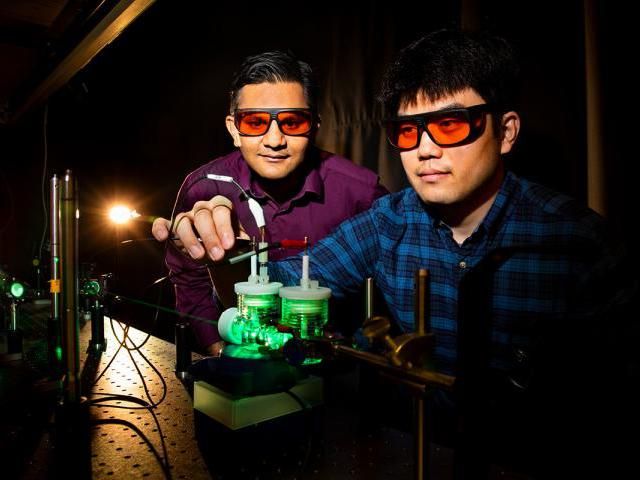
Artificial photosynthesis transforms carbon dioxide into liquefiable fuels
Dam_(methylase)
